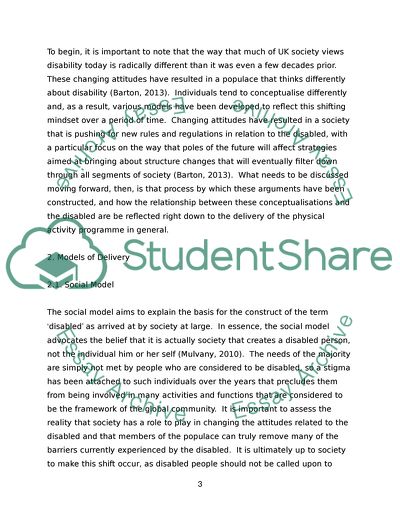Cite this document
(Changing Conceptualizations of Disability Dissertation, n.d.)
Changing Conceptualizations of Disability Dissertation. Retrieved from https://studentshare.org/social-science/1862724-critically-assess-the-relationship-between-changing-conceptualisations-of-disability-and-the-organisation-and-administration-of-inclusive-physical-activity-programmes
Changing Conceptualizations of Disability Dissertation. Retrieved from https://studentshare.org/social-science/1862724-critically-assess-the-relationship-between-changing-conceptualisations-of-disability-and-the-organisation-and-administration-of-inclusive-physical-activity-programmes
(Changing Conceptualizations of Disability Dissertation)
Changing Conceptualizations of Disability Dissertation. https://studentshare.org/social-science/1862724-critically-assess-the-relationship-between-changing-conceptualisations-of-disability-and-the-organisation-and-administration-of-inclusive-physical-activity-programmes.
Changing Conceptualizations of Disability Dissertation. https://studentshare.org/social-science/1862724-critically-assess-the-relationship-between-changing-conceptualisations-of-disability-and-the-organisation-and-administration-of-inclusive-physical-activity-programmes.
“Changing Conceptualizations of Disability Dissertation”, n.d. https://studentshare.org/social-science/1862724-critically-assess-the-relationship-between-changing-conceptualisations-of-disability-and-the-organisation-and-administration-of-inclusive-physical-activity-programmes.


